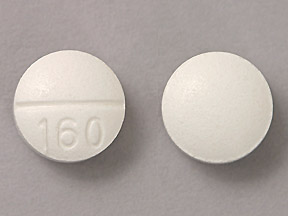Genac Interactions
There are 494 drugs known to interact with Genac (pseudoephedrine / triprolidine), along with 10 disease interactions, and 1 alcohol/food interaction. Of the total drug interactions, 31 are major, 456 are moderate, and 7 are minor.
- View all 494 medications that may interact with Genac
- View Genac alcohol/food interactions (1)
- View Genac disease interactions (10)
Most frequently checked interactions
View interaction reports for Genac (pseudoephedrine / triprolidine) and the medicines listed below.
- Abreva (docosanol topical)
- acetaminophen
- acyclovir
- Advair Diskus (fluticasone / salmeterol)
- Afrin (oxymetazoline nasal)
- amlodipine
- amlodipine / valsartan
- Armour Thyroid (thyroid desiccated)
- Astepro (azelastine nasal)
- Bactrim (sulfamethoxazole / trimethoprim)
- betamethasone / clotrimazole topical
- brompheniramine / phenylephrine
- calcium / vitamin d
- cephalexin
- chlorpheniramine
- clemastine
- clindamycin
- cyclobenzaprine
- depo-subQ provera 104 (medroxyprogesterone)
- dextromethorphan / guaifenesin
- Diovan (valsartan)
- diphenhydramine
- diphenhydramine topical
- doxycycline
- Dupixent (dupilumab)
- Elidel (pimecrolimus topical)
- Eucrisa (crisaborole topical)
- Exforge (amlodipine / valsartan)
- guaifenesin
- hydrochlorothiazide / lisinopril
Genac alcohol/food interactions
There is 1 alcohol/food interaction with Genac (pseudoephedrine / triprolidine).
Genac disease interactions
There are 10 disease interactions with Genac (pseudoephedrine / triprolidine) which include:
- cardiovascular disease
- anticholinergic effects
- asthma/COPD
- cardiovascular
- renal/liver disease
- GI narrowing
- PKU
- BPH
- diabetes
- glaucoma
More about Genac (pseudoephedrine / triprolidine)
- Compare alternatives
- Drug images
- Side effects
- Dosage information
- During pregnancy
- Drug class: upper respiratory combinations
Related treatment guides
Drug Interaction Classification
| Highly clinically significant. Avoid combinations; the risk of the interaction outweighs the benefit. | |
| Moderately clinically significant. Usually avoid combinations; use it only under special circumstances. | |
| Minimally clinically significant. Minimize risk; assess risk and consider an alternative drug, take steps to circumvent the interaction risk and/or institute a monitoring plan. | |
| No interaction information available. |
See also:
Further information
Always consult your healthcare provider to ensure the information displayed on this page applies to your personal circumstances.


